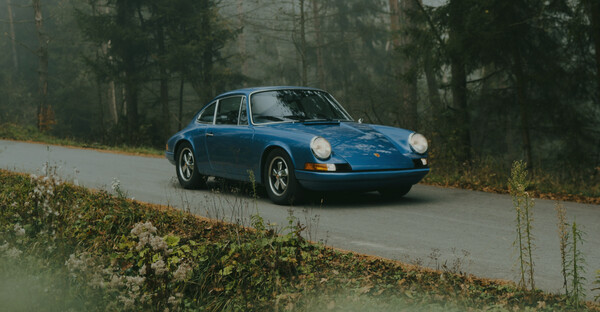Description
-One of the most beautiful and striking cars ever produced. It carries inspirational Skiff Torpedo coachwork, reserved for only the finest of motor cars.
-23 UB is a famous car, superbly restored, and a multiple concours winner. It is truly an outstanding example.
-1914 London to Edinburgh cars are the ultimate development of the Edwardian Silver Ghost. They offer supreme performance and refinement.
Chassis number 23 UB is simply a breath-taking car. The unrivalled mechanical excellence of the Silver Ghost chassis married with the beautifully crafted Labourdette Skiff coachwork make this car a mobile work of art. Importantly this car was originally built as a London to Edinburgh Model and, being a 1914 example, it incorporates all the improvements applied to the Silver Ghost in the pre-First World War years.
This unique style first created by French coachbuilder Henri Labourdette was the epitome of pre-war opulence and design. Jean-Henri Labourdette was a third-generation coachbuilder when he pioneered the radical Skiff body style. Shaped like nothing else from the period, the first car to carry this coachwork was a 1912 Panhard et Levassor commissioned by René de Knyff, the director of Panhard et Levassor and a pioneer racing driver. René later became president of Commission Sportive Internationale (CSI), now known as the FIA. Known as a great sportsman who practiced bicycling and rowing daily, he suggested to Labourdette: “You know that I do rowing. Why don’t you build this body like my skiff, in mahogany with ribbing and all? It’s light and strong.”
Just like the sleek racing boats of the time, traditional boat building techniques were employed. Triple layer mahogany planks were beautifully fastened to an ash frame with flush copper rivets. The sleek aerodynamic body was highly varnished with no door openings, providing the chassis with incredible rigidity for such a lightweight body. By the beginning of 1914 Labourdette had built just two Skiff bodies on Silver Ghost chassis. The first car being 29 NA, the 1914 Monte Carlo Trials car supplied to the Earl of Portarlington and nicknamed the ‘Flying Dutchman’. The second chassis to be fitted with Skiff coachwork also flirted with competition. In a clever marketing ploy, Rolls-Royce loaned 2 EB to Charles Freeston to report on the 1914 Alpine Trial, the year James Radley won in a Colonial London to Edinburgh Silver Ghost. Freeston later went on to write the motoring guide “The High-Roads of the Alps”. Sadly, neither of these cars that carried the Skiff bodies survive today.
The London to Edinburgh Silver Ghost is widely recognised as the most desirable of all the Silver Ghost types. The model was conceived in 1911 to participate in the London to Edinburgh trial in which it remarkably completed solely using top gear. The car also obtained an average speed of 78 mph across a flying half mile at Brooklands Circuit fitted with touring coachwork. This achievement demonstrated unrivalled performance and flexibility. Subsequent duplicate cars followed that incorporated high compression engines with larger carburettors, tapered bonnets with narrow dashboards and raked steering to accept lightweight, sporting coachwork. The London to Edinburgh cars were born, defining the ultimate sporting car for their period.
The legendry tale of how Rolls-Royce developed the Silver Ghost to participate in the 1913 Alpine Trial and dominated the event is well known. However, what is perhaps less well known is that this success was just a starting point for James Radley who went on to enter the subsequent Alpine Trial in 1914 as a privateer. To do this, Radley ordered another car, 18 PB, the build sheets for which state “Make all alterations deemed necessary for Austrian Alpine Trials”. Radley successfully won the event finishing first on each day except one, where he went off course for 57 miles. Compared to its 1913 predecessors, 18 PB benefitted from significantly improved brakes. In 1913 the cars had a foot operated transmission brake and small diameter rear wheel brakes operated by the handbrake lever. Although not initially a problem with competitors using lower gears to descend each pass, this meant it could take as much time descending a pass as it could climbing it. In late 1913 and after much experimentation, Rolls-Royce had a solution: fit larger rear brakes.
The handbrake arrangement remained relatively unchanged. However, the troublesome transmission brake was deleted and instead foot operated brakes were added to the rear wheels via a larger set of brake shoes being mounted surrounding the handbrake shoes. This arrangement became known as ‘concentric rear brakes’. Further enhancement continued with replacement of the cast iron brake linings and replacing them with special Ferodo linings. The sporting additions made to the all-new Colonial Silver Ghost model including the four-speed gearbox and improved brakes paid off with the car achieving fastest time of the day on special tests including the Katschberg pass. Whilst Rolls-Royce did not officially support this event, it is no coincidence they loaned the event journalist, Charles Freeston of the Autocar Magazine, one of the most flamboyant Silver Ghosts ever produced, chassis 2 EB carrying Labourdette Skiff coachwork, to follow the rally. Interestingly, this was to the same design specification (design number 3577) as fitted to 23 UB and is perhaps demonstrative of Rolls-Royce’s high regard for the unique coachwork design.
A London to Edinburgh chassis carrying spectacular Skiff coachwork, 23 UB offers the epitome of style and driving experience. The man responsible for ordering 23 UB was Sir George Riddle. He was a solicitor, director of News of The World and owner of other newspapers, and later in life an author. During the First World War he played a vital role liaising between the British Government and the press, also representing the British press barons at the Paris Peace Conference and later peace conferences. He ordered 23 UB as a ‘London to Edinburgh’ E-Series chassis model, with a high compression engine and a larger radiator with nickel fittings.
23 UB was on test in June 1914. Build cards confirm it was built as a London to Edinburgh model. In July of the same year the chassis was sent to Barker & Co. coachbuilders, initially for fitment of a cabriolet coachwork with grey paintwork and green leather upholstery. Records show that the order was changed and instead the car was fitted with limousine coachwork. Due to the onset of the First World War, Riddle never took delivery of the car. Instead, Rolls-Royce records show the car as being sold to the war office on 27th July 1915 and “used by the military on form of active service in the European War 1914/ 19”. Documentation confirms that throughout the war years the car was well looked after and serviced.
After the war the car was used by General Sir William Robertson, the former Chief of the Imperial General Staff for the British Army. It was not until the 1960s when 23 UB was rediscovered having been used as a commercial vehicle on a farm in England. By this time the car was in a poor state of repair. It was the turn of the 20th century that witnessed the fortunes of 23 UB really changing. Renowned Silver Ghost specialist Fres Buess in America embarked on a restoration project to recreate the famous Skiff coachwork of Parisian coachbuilder Henri Labourdette, to design number 3577, identical to the Alpine Trials Skiff of 1914. With the chassis being subject to a full restoration, its L to E specification made it the perfect chassis for a Skiff body.
23 UB debuted in 2001 at Pebble beach where it was awarded one of the most prestigious awards for Most Elegant Open Car. Furthermore, the car went on to win Best in Show at three other Concours events: Newport Coast, Palos Verdes, and Rodeo Drive. These cement 23 UB’s reputation as a truly unique piece of automotive design that is testament to the original car built by Labourdette over 100 years ago.
Cars carrying Skiff coachwork are few and far between, with even fewer having the presence and drivability of the Silver Ghost. Whilst this car may appear to have been conceived for the concours lawn, the origins of its purpose were of a sporting nature. The London to Edinburgh specification combined with the lightweight, rigid Skiff coachwork result in an ultimate performing car of its period. This car has been subject to a meticulous restoration and since been toured and shown with great success.















